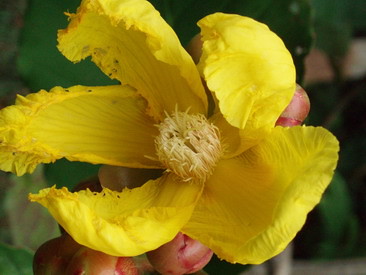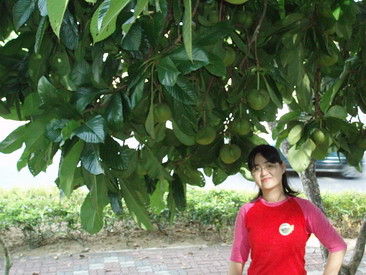My First Encounter With Dillenia
From this assignment, I got the opportunity to get to know two species of Dillenia that are very commonly found. The first species is the shrubby simpoh or Dillenia suffruticosa. It is also known as “Simpoh Ayer” by local. I was attracted to it because it had large showy yellow petals (picture below). Besides that, another structure that caught my attention at that time is the reddish seeds from the indehiscent fruits that have a star-like shape. Even till now, I was still fascinated to see it. Although it flowers throughout the year, it is not easy to bump into its’ fruit that is still intact with seeds. Both fruits and petals of flowers of this species fell off by noon. I even found out from an article that the flowers and fruits started to expand early before dawn around 3 a.m and the flowers are in full bloom an hour before sunrise.
The second species of Dillenia that I encounter is Dillenia indica or much famously known as the elephant apple tree. Yes, you’re right! I was fascinated with the fruits of that tree. It’s huge and the first resemblance that flashes in my mind at that moment was the coconut fruit. The fruit is hard and heavy. The ripen fruits are yellowish in colour while the unripen fruits are apple green. Somehow, I didn’t get the chance to cut the fruit at that time but recently, I did it to satisfy my curiosity as well as part of understanding my genus much more. I’m still hunting for its’ flower somehow. My hunger to touch and capture the flower of this species will not be satisfied by just looking at other people photographs. Besides, I’ll only understand the structure of the flower part much better with a specimen on hand. Moreover, the petals are white in colour. Therefore, it’ll be highlighting the tree which has dark green leaves. Below right is my photo with the elephant apple tree taken on 28 August 2006.




0 Comments:
Post a Comment
<< Home